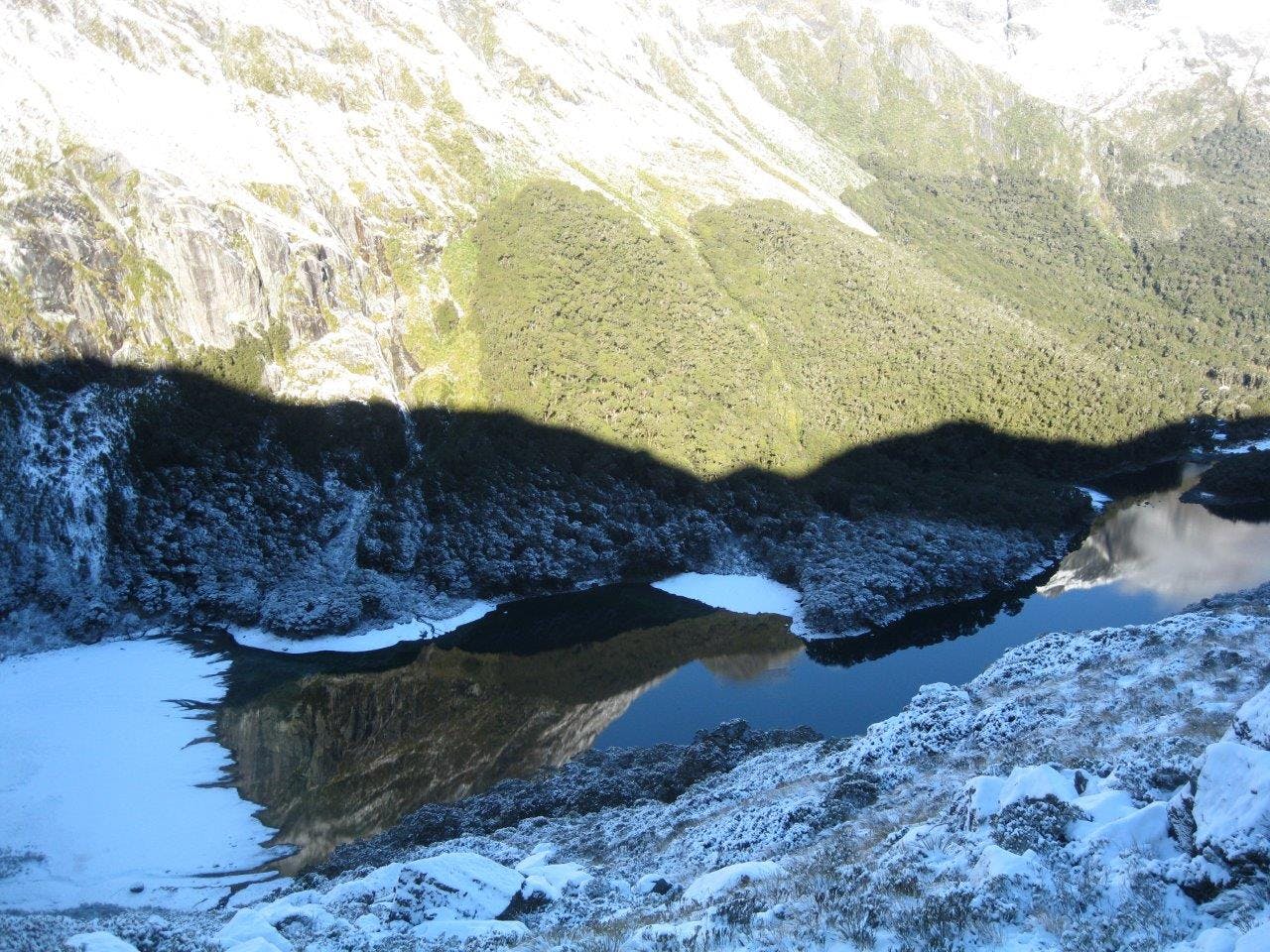The recent rescue of the Czech woman from the Routeburn Track has raised awareness about tourism safety in the New Zealand outdoors.
Pavlina Pizova survived a month in the hut warden’s quarters of Lake Mackenzie Hut after her partner fell and died on the track in late July. Poor winter conditions and her compromised physical and emotional state meant she couldn’t leave the hut, so Pizova kept herself fed with canned food left from the previous season, and stayed warm by burning firewood.
The Routeburn Track is one of New Zealand’s busiest walks, with tens of thousands of trampers each year making their way over the scenic Fiordland track. Marketed as one of the Great Walks, it had over 13,700 visitors last year alone, 75 percent of which were international, and most come in the summer months. Geoff Owen, head ranger for the Wakatipu Department of Conservation, says it’s very rare for people to attempt the full 32km track in the winter months.
DOC doesn’t close any part of the track over the winter, and Owen says it’s common for people to do day-walks from both ends of the track.
“It is popular, even though it’s the wintertime,” Owen says. “But we advise not to push right through in the winter conditions.”
Pizova, 33, and her late partner, Ondrej Petr, 27, set out on the track on July 26, and were bombarded with heavy snow and low clouds that left them disoriented. After spending a night outside exposed to the conditions, Petr slipped and fell to his death. Pizova then spent two additional nights outside in the freezing temperatures before reaching the DOC hut at Lake Mackenzie, where she broke into the warden’s quarters to take refuge.
The huts on the Routeburn remain open all year but are winterised between May and October. While the hut’s public area is sparse, the warden’s hut was stocked with firewood, gas, and some food.
The Czech couple hadn’t communicated their intentions to anyone before they set out; it was the Czech authorities that raised an alarm bell.
Pizova has said she and her partner were warned ahead of time that the track conditions could be challenging and dangerous; Owen says the DOC visitor centre staff in Queenstown are very clear about weather reports and communicating risk to trampers.
While the Routeburn is a Great Walk, it’s not a Great Walk in the winter months, Owen says.
The facilities are bare-bones, and it’s not typically recommended to trampers outside the official Great Walk season, which runs from October to April.
“Even though it is a Great Walk, and is a fantastic place, it can be unforgiving at times, and this is obviously one of those times.”
DOC, while they do what they can to help people understand the conditions, cannot stop anyone from walking a track unless it is closed altogether.
“It’s a balance between locking things up to keep people safe – which will be supported by some but not accepted by others – or leaving them open but making sure people are aware of the hazards they may well face.”
Owen says that DOC will do a review of their safety systems in light of the events in order to determine if and where they could do things differently.
“When we have an incident like this, we’ll look at what we are currently doing; is there anything we can improve on? But also, we won’t take away the fact that people are responsible for themselves.”
In a press conference after her rescue, Pizova recognised that she and her partner could have been more prepared.
“I am aware we made a few mistakes not leaving our intentions with somebody, not carrying a PLB, and underestimating the winter conditions of the track,” she said.
Owen, however, commends Pizova in her ability to survive for so long in such remote conditions.
“They understood what they were getting themselves into,” Owen says of the couple. “Whilst they may not have made a good first decision, both the police and myself commend her for making the decision to stay in the hut – that was absolutely the right decision. She was resourceful, resilient, and strong.”






